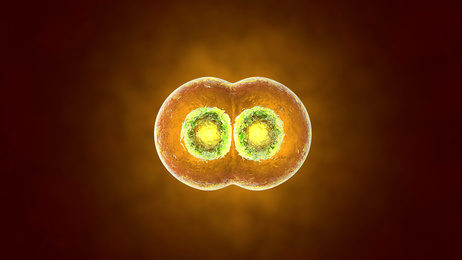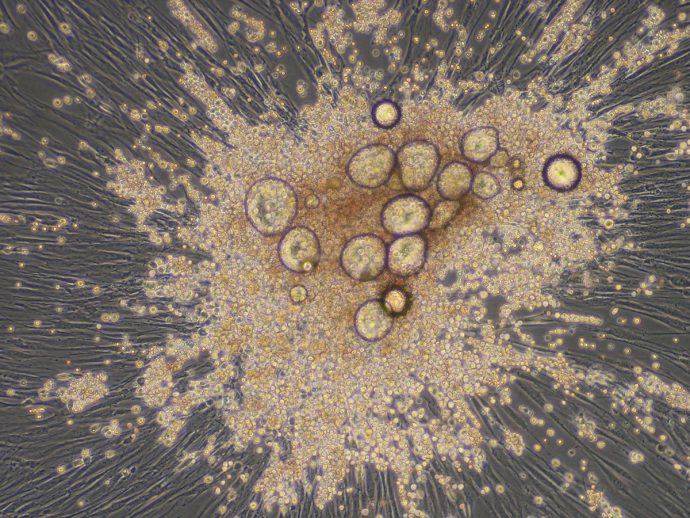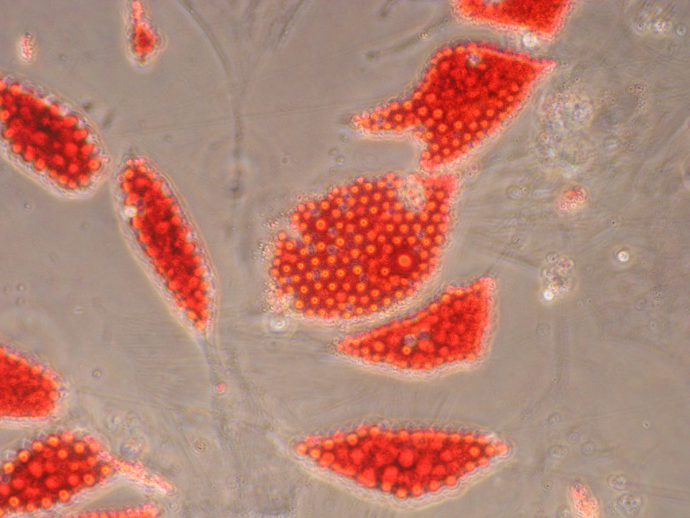What are myelodysplastic syndromes?
Myelodysplastic syndromes (MDS) characterize a group of bone marrow abnormalities resulting in ineffective hematopoiesis. To sum up, the differentiation process of hematopoietic stem cells (HSCs) in all three blood cell types (red blood cells, white blood cells and platelets) is altered. The severity of the disease is variable in the amount and quality of the cells and several lines may be affected simultaneously or not, and unevenly.

Clinically, patients are tired (anemia), have recurrent infections (leukopenia), or have more frequent bleeding due to platelet deficiency (thrombocytopenia). The therapeutic arsenal used is poor and adapts to the disease severity. Treatment of predominant anemias may progress from injection of erythropoietin (EPO) to regular blood transfusions. The most effective treatment is bone marrow allograft but is rarely practiced due to the median age of patients with MDS (65 years). Finally, this disease has historically been defined as pre-leukemic states because of the propensity of MDS that evolve into acute myeloid leukemia (AML).
Our research on MDS?
To date, MDS is mainly studied with a clinical point of view; Different treatments (new drugs or drug combinations) are tested directly on patients as part of clinical research protocols. In parallel with these clinical studies, few basic research teams are devoted to the study of MDS. Understanding the mechanisms and identifying causes of this disease is currently being addressed mainly in the context of high-throughput sequencing (NGS). We have chosen a more global approach including the hematopoietic niche with a primary objective to apply our findings to the clinical and therapeutic levels. This is why we are working on 2 approaches to this disease by limiting ourselves to the anemia component of MDS:
- The search for a reliable and fast diagnostic tool so that patients and doctors can quickly set up a medical protocol.
- The understanding of this disease according to its severity. Current treatments compensate the lack of cells (EPO injections so that bone marrow produces more red blood cells) but the disease and its causes are still present.
In order to do this, we have established a double research axis:
- On the hematopoietic stem cells we do differentiate into red blood cells. We are studying all steps of this process to identify differences between MDS and control patients.
- On mesenchymal stem cells (MSC) which are acting in the hematopoietic stem cell niche. Mesenchymal stem cells are able to differentiate and form bones, cartilage and fat in particular. The implications of these cells have been demonstrated in MDS and we are trying to understand their causes.
Our approach can be summarized as follows: which of MSC and HSC are first sick?
More informations about this disease:
Association de malades – Connaître et Combattre les Myélodysplasies


